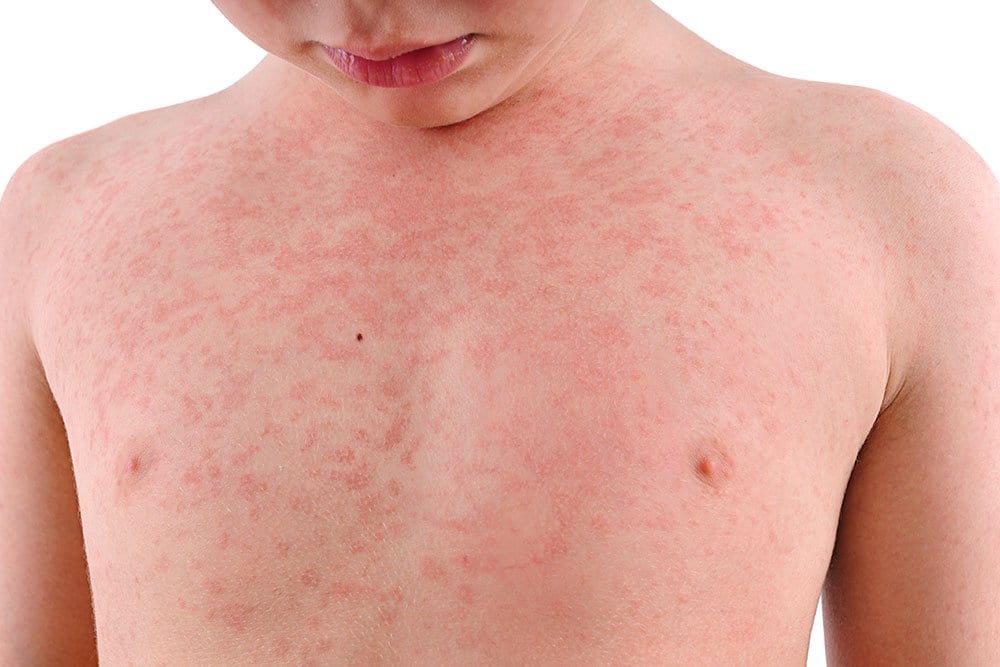The 5 Most Common Summertime Rashes and How to Avoid Them
 Minnesota summers can be a much-needed break for people who suffer from dry skin in the winter. However, new skin irritants can arise with the changing of the season. Here are the five most common summertime rashes and what you should know about each of them.
Minnesota summers can be a much-needed break for people who suffer from dry skin in the winter. However, new skin irritants can arise with the changing of the season. Here are the five most common summertime rashes and what you should know about each of them.
Heat rash is caused by sweat trapped under the skin. It can feel bumpy and itchy.
- If you're suffering from a heat rash, make sure to avoid wearing tight clothing that doesn't allow your skin to breathe. Moisture-wicking fabrics may help prevent sweat from building up on the skin.
- Don't use thick lotions or creams that can clog your pores.
- Try not to become overheated, especially in warmer months. Seek out air-conditioning or carry a handheld fan.
- Use a soap that won't dry your skin and doesn't have fragrances or dyes.
Sunburn is caused by exposure to the sun causing inflamed skin that feels hot to the touch. There are a variety of symptoms associated with sunburn including skin blistering, itching and pain.
- Wear sunscreen and apply it frequently.
- Long sleeve clothing can help protect you from the sun.
- Avoid being outside at peak sun times.
Poison ivy is an allergenic plant found in Minnesota. Contact with the oily resin in the leaves will often cause an irritating skin reaction for most people.
- Stay out of areas known for having poison ivy.
- Wear long sleeves and pants with socks and shoes.
- After being in the woods, take off your clothes and shower.
Swimmer's itch is caused by parasites in the water called chiggers. Even though its name implies they live in water, they can be found in sand and grassy areas, too.
- Wearing long sleeves and pants with socks and shoes/boots will help prevent bugs from accessing your skin.
- Use insect repellents or insecticides to keep bugs off you (make sure to follow age-appropriate guidelines).
- Avoid outdoor activities near grassy, wet and wooded areas in the summer during warm temperatures.
Bug bites often cause small bumps on your skin that are itchy and painful.
- Wear insect repellents or insecticides to keep bugs off you (make sure to follow age-appropriate guidelines).
- Wear long sleeves and pants to help prevent bugs from accessing your skin.
Sometimes it can be difficult for a person to determine what kind of rash they are suffering from. Your doctor will ask what your skin may have been exposed to, evaluate what the rash looks like and factor in what symptoms are associated with it like pain or itching.
If you notice you have a rash, it's not always an immediate cause for concern to be seen in a clinical setting. Most rashes can be watched and treated with general over-the-counter antihistamines, topical steroids like hydrocortisone, or burn creams in the case of sunburn.
If a rash isn't responding to over-the-counter treatments or seems to be worsening, that's when it's time to be evaluated by a health care professional.
Sometimes, rashes can get infected. If you are concerned that might be the case, you should be seen immediately, as that's cause for concern.
When properly treated with the right ointments, most rashes will clear up within a week. Sometimes rashes caused by poison ivy can take a bit longer and persist for a few weeks.
If you are experiencing a rash and have questions about it, call and make an appointment with your health care provider or try a virtual visit when it's most convenient for you.